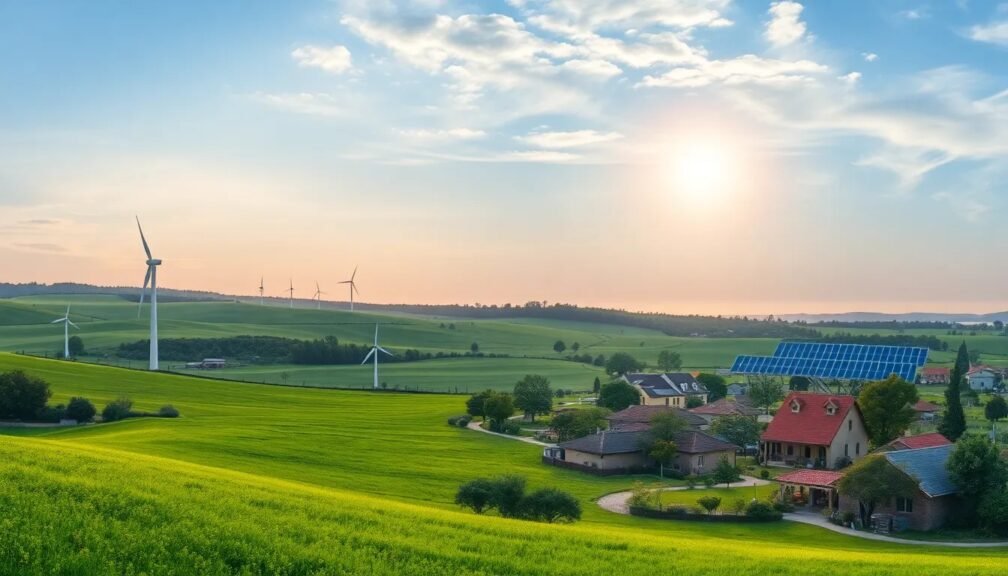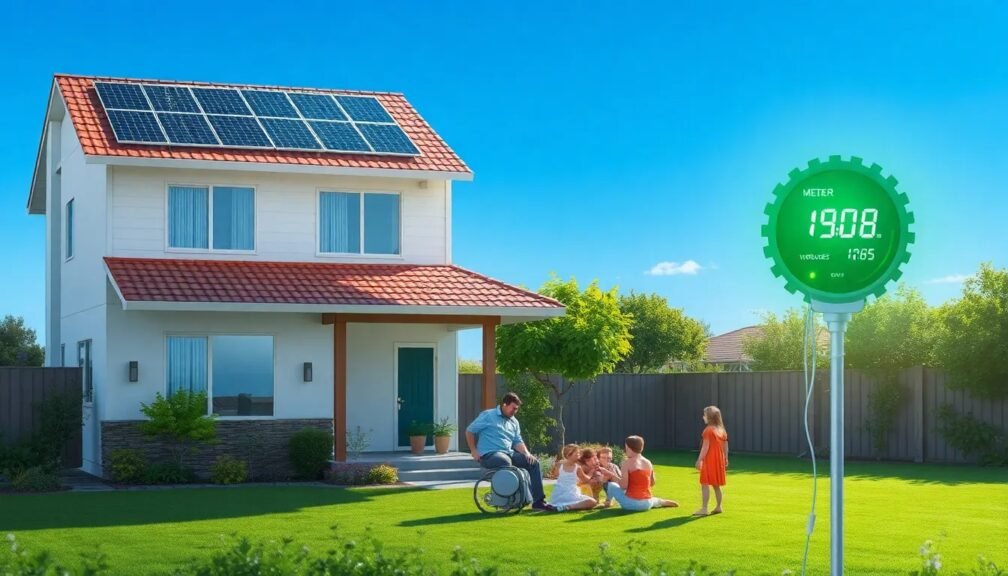In an era marked by climatic changes and environmental challenges, the quest for sustainable energy sources has never been more critical. Enter green electricity, a vital component in the fight against climate change and a key player in creating a sustainable future. This article delves into what green electricity is, its benefits, the technologies behind it, and actionable insights on how individuals and businesses can adopt it.
What is Green Electricity?
Green electricity refers to energy generated from renewable sources that have a minimal environmental impact. Unlike traditional fossil fuels, which release harmful pollutants and greenhouse gases, green electricity is derived from sources such as:
- Solar Power: Capturing sunlight through photovoltaic cells.
- Wind Power: Harnessing the kinetic energy from wind using turbines.
- Hydropower: Utilizing flowing or falling water to generate electricity.
- Biomass: Converting organic materials into energy.
- Geothermal Energy: Tapping into the Earth’s internal heat.
The primary motivation behind using green electricity is to reduce dependence on non-renewable resources and decrease environmental degradation. As more people recognize its importance, the demand for green electricity continues to grow.
The Importance of Green Electricity
Combatting Climate Change
One of the most pressing issues today is climate change, primarily fueled by the burning of fossil fuels. By shifting to green electricity, we can significantly reduce carbon emissions. According to the Intergovernmental Panel on Climate Change (IPCC), transitioning to renewable energy sources is crucial for limiting global warming to below 1.5 degrees Celsius.
Promoting Energy Independence
Relying on fossil fuels often puts countries at the mercy of fluctuating oil prices and geopolitical tensions. By investing in green electricity, nations can enhance their energy independence, reducing reliance on foreign energy imports.
Economic Growth and Job Creation
The renewable energy sector is a rapidly growing industry, contributing to job creation. In the U.S. alone, jobs in solar and wind energy are growing significantly faster than those in fossil fuel industries. By investing in green electricity, we not only protect the planet but also stimulate economic growth.
How Green Electricity Works
The mechanics behind green electricity involve various technologies tailored to harness renewable energy sources. Here’s a closer look:
Solar Energy Technologies
- Photovoltaic (PV) Systems: These convert sunlight directly into electricity using semiconductor materials.
- Concentrated Solar Power (CSP): This method uses mirrors or lenses to focus sunlight onto a small area, converting it into heat, which then generates electricity.
Wind Energy Technologies
- Onshore Wind Turbines: Located on land, these turbines convert wind energy into electricity efficiently.
- Offshore Wind Farms: Positioned in bodies of water, these turbines harness stronger and more consistent winds, generating even more electricity.
Hydropower
- Dams: Traditional hydropower generation involves constructing dams to create reservoirs; water released from the reservoir spins turbines, generating electricity.
- Run-of-the-River Systems: These systems generate electricity without large reservoirs, preserving ecosystems.
Biomass Energy
Biomass energy can be produced from organic materials like wood chips, agricultural waste, and even municipal waste. The combustion of biomass releases energy, which can be captured and converted to electricity.
The Benefits of Green Electricity
Embracing green electricity offers numerous advantages:
Environmental Benefits
- Reduction in Carbon Footprint: Transitioning to renewable energy directly contributes to lowering greenhouse gas emissions.
- Biodiversity Preservation: Sustainable energy practices tend to have a lower impact on ecosystems compared to fossil fuel extraction and usage.
Economic Benefits
- Cost-Effectiveness: The costs of solar and wind technologies have dropped dramatically over the past decade, making them competitive with traditional fossil fuels.
- Energy Savings: Investing in renewable technologies can lead to long-term savings on energy bills.
Health Benefits
- Reduced Air Pollution: Moving away from fossil fuels leads to improved air quality, reducing respiratory illnesses and health care costs.
- Sustainable Livelihoods: Communities centered around renewable energy sources can thrive economically while promoting health and sustainability.
How to Transition to Green Electricity
For Homeowners
-
Invest in Solar Panels: Consider installing solar panels on your property. Numerous state and federal incentives can make this more affordable.
-
Choose a Green Energy Provider: Many utility companies offer green energy options. Switching to a provider that utilizes renewable sources can make an immediate impact.
-
Use Energy-Efficient Appliances: Opt for appliances with high energy-efficiency ratings. This can help reduce overall energy consumption before transitioning to green electricity.
-
Consider Energy Storage Solutions: Battery storage systems can allow you to save excess energy generated from renewable sources for later use.
For Businesses
-
Conduct an Energy Audit: Understand your energy consumption and seek ways to reduce it before transitioning to renewable sources.
-
Utilize Power Purchase Agreements (PPAs): Many businesses can enter agreements to purchase renewable energy directly from generators. It allows you to benefit from green electricity without upfront investment.
-
Invest in Energy Management Systems: These systems can help optimize the use of energy in your facilities, maximizing efficiency and minimizing waste.
-
Get Certified: Consider obtaining certifications like LEED (Leadership in Energy and Environmental Design) to showcase your commitment to sustainable practices.
Conclusion
Green electricity is not just an option; it’s a necessity for a sustainable future. As individuals, businesses, and nations increasingly recognize the urgent need to address climate change, transitioning to renewable energy sources becomes paramount. By taking actionable steps—whether it’s installing solar panels, choosing green energy providers, or investing in renewable technologies—we can all contribute to a healthier planet.
Making the switch to green electricity is not just beneficial for the environment; it can lead to economic growth, job creation, and improved public health. The future is green, and by harnessing the potential of renewable energy, we can ensure a sustainable and prosperous world for generations to come.
Actionable Insights
- Start small: Begin with energy-efficient appliances or a small solar installation.
- Stay informed: Keep abreast of new technologies in renewable energy and energy efficiency.
- Advocate: Support policies that promote green electricity initiatives at the local, state, and national levels.
Together, we can foster a greener, cleaner future through the power of green electricity.



